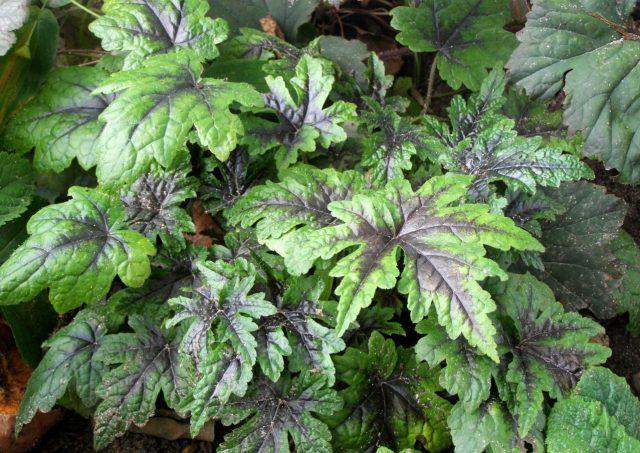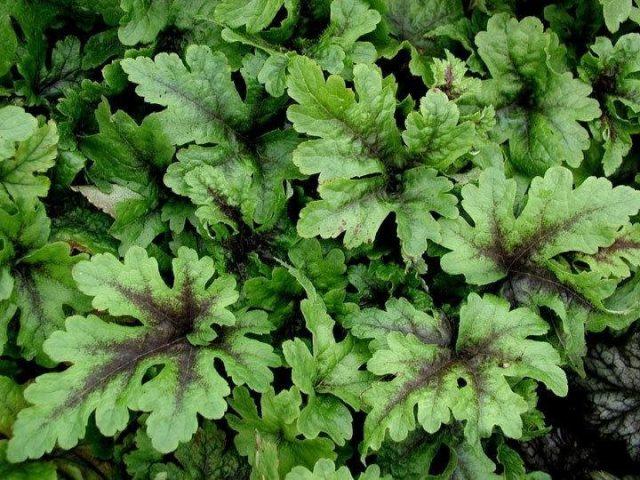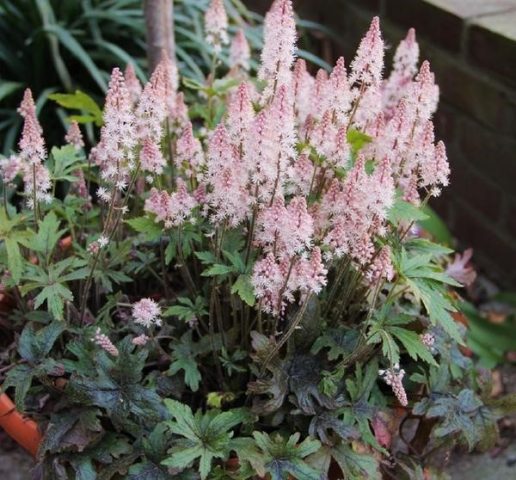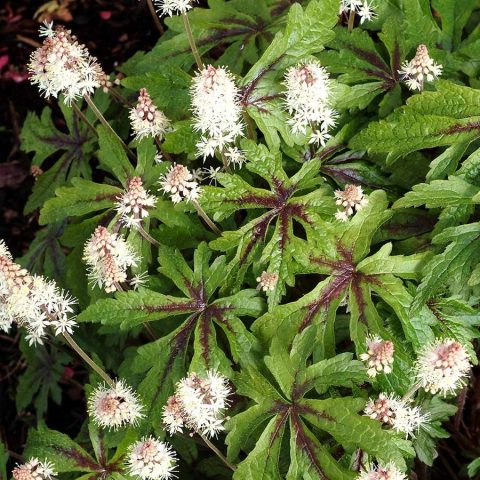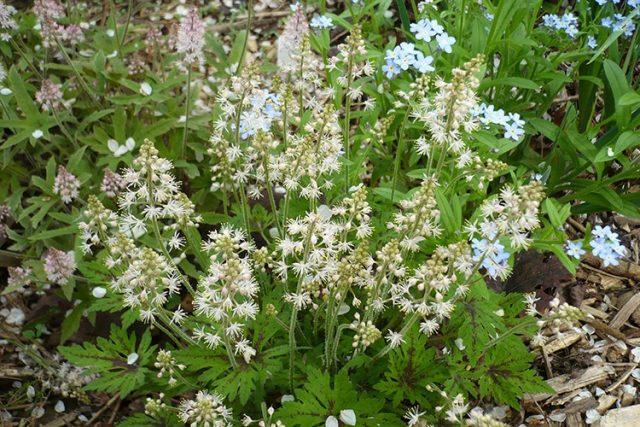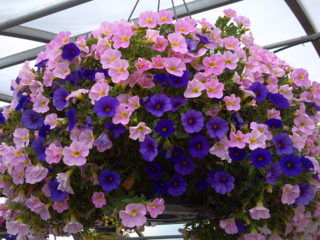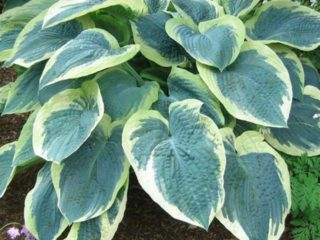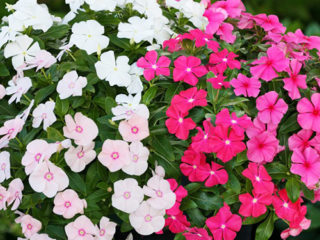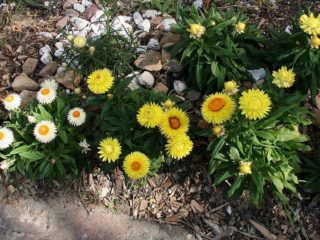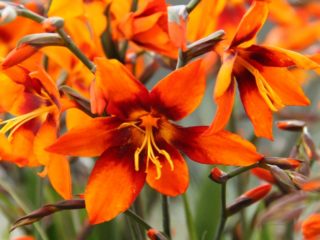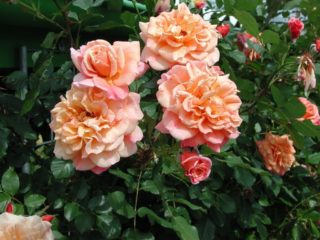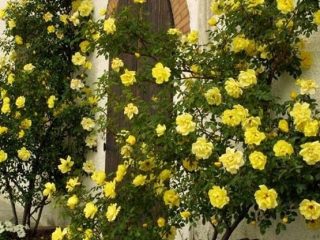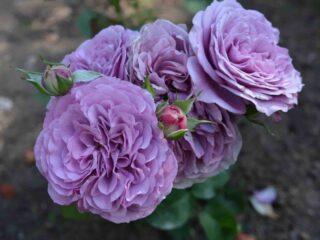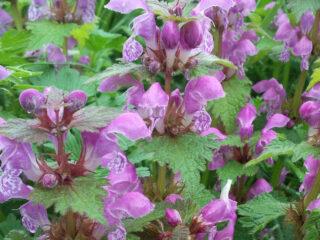Content
- 1 Description of the tiarella plant
- 2 Varieties
- 3 The best tiarella varieties with names
- 4 Where to plant tiarella
- 5 Rules for planting tiarella
- 6 Caring for tiarella in open ground
- 7 Reproduction of Tiarella
- 8 Problems when growing tiarella
- 9 Application in landscape design
- 10 Conclusion
- 11 Reviews about growing tiarella
Photos and descriptions of Tiarella tell about a culture that is not particularly well-known among summer residents, which, along with ferns and hostas, grows well in shady corners of the garden. It is a perennial, closely related to heuchera, and forms hybrids with it. Another advantage of the plant is its high resistance to cold.

Tiarella belongs to the genus of crops of the Saxifraga family
Description of the tiarella plant
Tiarella or tiarka is a shade-loving perennial that naturally grows on mountain slopes and in moist forests. It can be found in areas with temperate and even cold climates. The lack of sunlight does not prevent it from blooming and forming a beautiful green mass. In the garden, the crop is grown as an ornamental plant, rich in its varietal diversity. The bushes are suitable for flower beds made in different styles, rock gardens, rockeries.Among the requirements that tiarella makes are a semi-shady or shady position, moist soil, drained and fertile soil.
Judging by the botanical description, tiara retains its decorative effect throughout the season, which is achieved thanks to its beautiful evergreen leaf blades. Their type can be simple or complex, the color is usually dark green with a pink or purple center. They are quite large, about 10 cm wide, up to 15 cm long. Their surface is pubescent, their shape is jagged. The rhizome of the plant is not large, but grows very quickly.
Tiarella height
Judging by the description of the herbaceous perennial, its height may vary depending on the variety and growing conditions. Usually the growth range is from 10 to 60 cm, but sometimes there are specimens that stretch up to 80 cm in length.
When does Tiarella bloom?
The budding period begins early in tiarella, the flowering time falls in the second half of spring. Usually the period when it can be observed is at the end of April and can last until the beginning of summer. The flowers of the culture are small, cone-shaped or tubular, the color is most often white, but sometimes can be soft pink, the calyx consists of five sepals, which grow together at the base. The petals on the buds are small, in the amount of 5 pieces. The flowers are collected in inflorescence clusters, located on bare peduncles. After flowering, fruits are formed in their place - boxes, inside of which from two to six small seeds ripen.
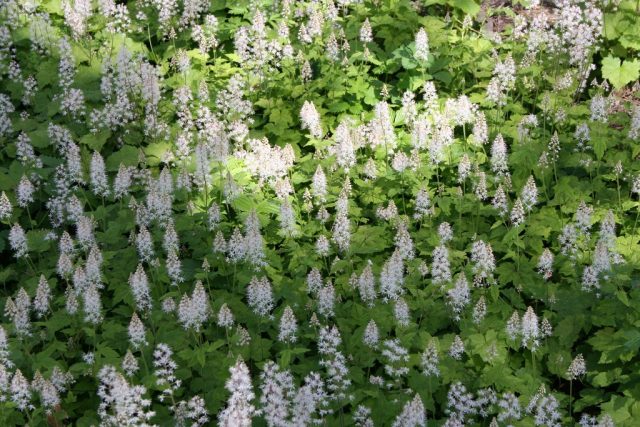
Tiara flowering can last from one to two months
Varieties
The plant amazes with its diversity of species, and thanks to the work of breeders, hybrid varieties of tiarella have been developed. They are decorative due to their spotted foliage and large flowers. The genus, judging by many sources, includes five varieties, four of which grow along the shores of water bodies and on the eastern side of North America, and one in Asia. Most often in gardening there are three types of crops: wherry, three-leaved and heart-leaved tiarella, photos and descriptions of which are presented below.
Tiarella cordifolia
Tiarella cordifolia is a groundcover species plant characterized by very abundant flowering. It is characterized by decorative openwork foliage, which has a beautiful orange tint. The leaf blades of some varieties have a spectacular edging and bright veins. The variety feels great in flower beds with any light level; it grows well not only in shade and partial shade, but also in the sun. It is used to decorate tree trunks, borders, and decorate the lawn. It blooms with small cream-colored buds, the inflorescences are formed vertically. The height of tiarella cordifolia bushes does not exceed 30 cm.
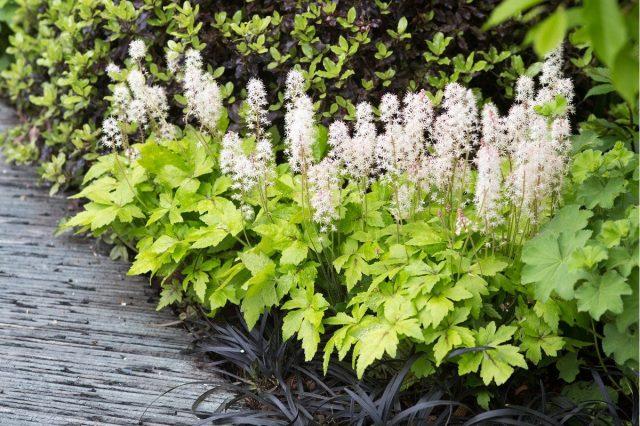
Cordifolia tiarella is the most common type of culture
Three-leaved
Three-leaved tiara (polyphylla) is also a low-growing type of crop, which is common in the natural conditions of Asia, Scotland, Alaska, and Georgia. The plant has carved foliage of a dark color, the flowering is cone-shaped, with fluffiness, the buds are faded pink.

If the three-leaf tiarella is poorly cared for, it will quickly grow and turn into a weed.
Wherry
Tiarella Wherryi (wherryi) differs from other plant species in its slow growth and lack of side shoots.The height of the variety is small, about 20-25 cm. The leaf blades have a spectacular appearance, they are finger-shaped, with a jagged edge, their color is juicy emerald, the veins are purple, and with the arrival of autumn they acquire a carmine color. Wherry blooms almost all summer; the buds are star-shaped, pinkish or white.
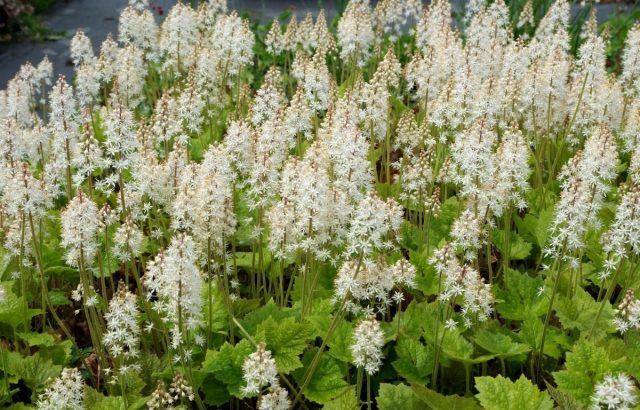
Tiarella Wherry has compact bushes
The best tiarella varieties with names
There are many varieties of this plant, and each of them has its own characteristics, as well as growing rules. The most common varieties in gardening include the following:
- Black Snowflake. It is distinguished by pink-colored inflorescences and carved leaf plates.
Tiarella Black Snowflake leaves have a glossy surface.
- Jeepers Creepers. Unusual appearance with delicate light green leaves.
Jeepers Creepers foliage turns purple in fall
- Neon Lights. Characterized by large foliage and snow-white flowers with purple veins.
The unusual color of Neon Light shows up strongly in cold weather
- Pink Skyrocket. The leaf blades of the variety are similar to maple foliage and have a purple color in the central part.
Tiarella Pink Skyrocket inflorescences are conical, pink buds
- Spanish Cross. The flowers of the variety initially have a pink tint, but gradually become snow-white.
Spanish Cross leaves have an original shape and purple color in the center
- Timbuktu. The leaves of the plant have purple veins and burgundy in the middle. The flowers are small, pale pink.
Timbuktu inflorescences are paniculate and fluffy
Where to plant tiarella
Tiarella, the care and cultivation of which does not cause gardeners any trouble, feels best in loose, nutritious, neutral or slightly acidic soil, which has the ability to retain moisture well. Most plant species feel comfortable in shade and partial shade, but there are also light-loving varieties. The optimal place for planting tiara is in areas under trees and shrubs.
Rules for planting tiarella
The plant is planted in spring or early autumn, in previously prepared dug soil. The landing algorithm is as follows:
- Deep holes are made in the ground.
- Organic matter is placed at the bottom of the holes.
- A plant seedling is placed on top.
- Fill the hole with soil.
Caring for tiarella in open ground
The plant does not need careful care, but in order for it to please the gardener with its beautiful appearance and healthy development, it is advisable to carry out certain activities with it. Tiarella responds well to fertilizing and mulching; it should also be watered on time and the soil should be loosened.
Watering
Many tiarella varieties can tolerate drought, but it negatively affects the characteristics of the plant, which is why it is advisable to water it abundantly and regularly. Thanks to this, the flowering will be dense and the leaves will become brighter.
Fertilizer
In spring, care for tiarella consists of feeding with mineral fertilizers or organic matter. Before flowering, nitrogen complexes can be added to the bushes. After the budding period ends, the plant can also be fed.
Wintering
In addition to winter-hardy plant varieties, there are also species that require shelter.These plants are cut off at the end of autumn and covered with peat and fallen leaves.
Reproduction of Tiarella
Tiarella can be propagated in different ways:
- division;
- cuttings;
- seeds.
The first two methods are the most effective and simple, most often used by gardeners. The plant is propagated by division in early spring, before the bushes begin to flower, and by cuttings - after the budding period is completed.
The plant is not often sown with seeds, since with this method of propagation one can encounter a number of difficulties:
- the need for stratification of planting material;
- constant monitoring of seedlings;
- loss of decorative varieties of their characteristics.
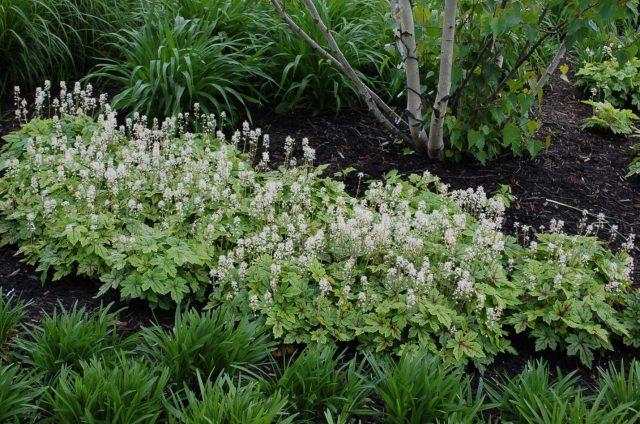
Tiara can grow in one place for more than ten years
Problems when growing tiarella
The flower has good immunity, and problems when growing it do not arise very often. Tiarella inhibits weeds, is immune to pests, and even repels some of them. Trouble is possible if the bush grows in a very dark and damp place. Despite the fact that the plant does not particularly like bright sunlight, such conditions are also unfavorable for it. In a gloomy flowerbed, the bush may weaken, the leaf blades will begin to rot, and the flower may be attacked by snails and slugs.
Application in landscape design
Tiarella in the garden can perform many functions and serve as decoration for different areas. The plant is great for planting around trees or shrubs, looks beautiful in forest and rocky gardens, and is used as a ground cover.It is planted in shaded corners, placed along artificial ponds, and used as undergrowth for tall bushes.
The plant fits perfectly into rock gardens; it can be used to create borders between ridges and flower beds; it combines well with other ornamental crops.
The best neighbors for a tiarka are:
- host;
- Brunner;
- conifers;
- lungwort;
- violet;
- boxwood;
- heuchera;
- periwinkle;
- fern;
- small bulbous crops.
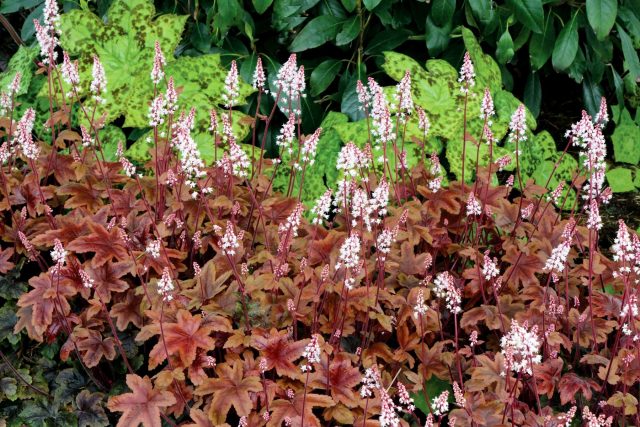
Tiarella feels great under the cover of hydrangea or azalea
Conclusion
Photos and descriptions of tiarella indicate that this plant is attractive, unpretentious, and has good winter hardiness. It is not yet very popular among gardeners, but for its abundance of positive characteristics it is quite worthy of their attention. The perennial grows well in the shade, has decorative leaves, and blooms profusely. Judging by the reviews, the plant looks great in different flower beds with any landscape.
Reviews about growing tiarella
